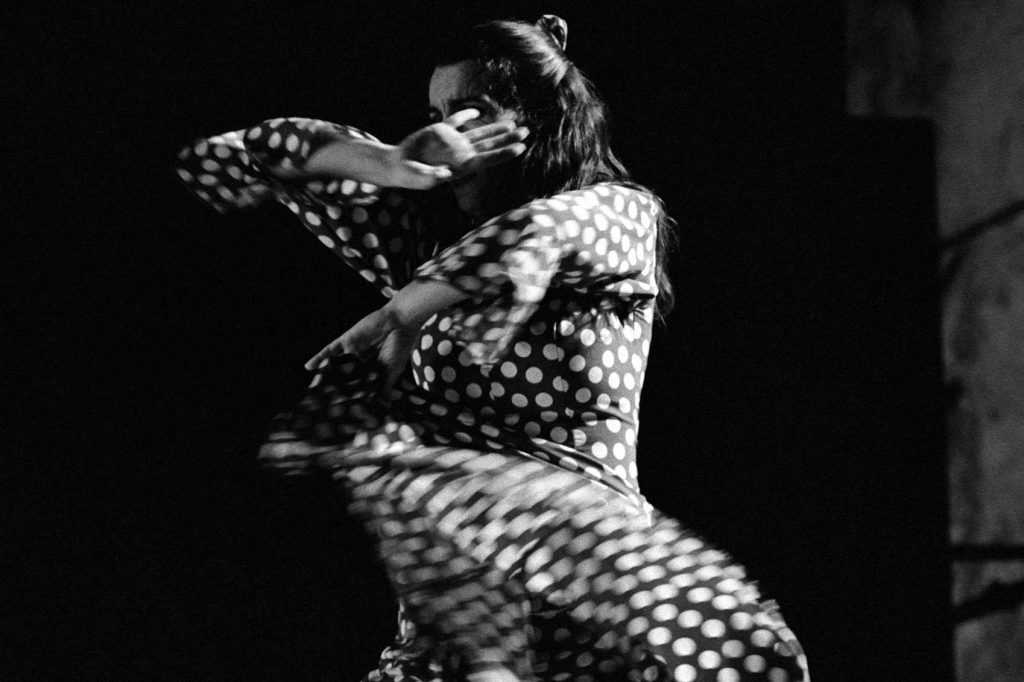Recently updated on June 5th, 2024 at 05:01 pm
Fiery and sensual, it’s no surprise that Flamenco is one of the world’s most instantly identifiable dances, with its swooshing dresses, thunderous looks and fluid improvisations. Despite its passion, drive and drama, only few understand what flamenco is all about. Here, we offer up some of the history and traditions behind this mysterious dance.
Flamenco, which is made up of three main elements: compás (rhythm), song (cante) and dance (baile), arrived with the Romani people when they entered Spain in the late medieval period. Originally set to folkloric rhythms of hand-claps known as “toque de palmas”, some dancers prefer to keep doing it the old way, while others prefer to boost their performance with lyrical guitars and frenzied castanets.


There must always be song and this comes in three forms: jondo (grand), intermedio (intermediate) and pequeño (small). Each musician will have their favourite, but jondo always involves intensity and profundity; intermedio is more conversational and pequeño is light, fun and exuberant.
Despite the theory, you don’t need a textbook to appreciate this art form. It’s almost everywhere in Spain, from gitana dresses drying on balconies to neon lights of athletic dancers in bar window, not to mention the souvenir stalls. At the heart of it all is Duende, the spirit of evocation. One part intensity, two parts struggle and darkness, this zeal feeds the flamenco fire and inevitably touches the hearts of its spectators.


The result is a beautiful combination of wildness and tightly controlled vigour. While it’s easy to get carried away in rapid strums, sashaying arms and the anguished caterwauls, the real heartbeat of the music is to be found in the tightly controlled clips and clops of the bailaora’s nail-capped shoes.
This mix of control and unbridled fervour is what really sets flamenco apart as it is not a social dance like the Rumba or Jive. You can’t simply learn a few dance moves and then get the hang of it, instead, flamenco is a solitary performance, a song from the soul.


Those seeking the real crème de la crème of flamenco should look no further than Seville. While many are happy to see the dance at bars or cafés cantantes anywhere in Spain, every connoisseur knows that Seville is the place to go. Especially its tablaos, which are small, specially-designed flamenco theatres.
If you do end up falling in love with flamenco (as most do), don’t expect the performances to be the same. Just remember: flamenco is emphatically an art with improvisation at its centre.
Set your watch to a fiery Flamenco beat as you dance through a Spanish tour, from Madrid to Andalusia on the Spanish Wonder.
Image Credits: Flamenco Pois © iStock/T-Immagini. Traditional Flamenco Dresses © iStock/Jorisvo. Flamenco Dance © iStock/Vanish-Point.